For many freelancers and digital creators in the UK, independence is a dream come true — the ability to set one’s own hours, choose clients, and build a personal brand. Yet, with that freedom comes one annual challenge that even the most creative professionals can’t avoid: Self-Assessment.
Unlike salaried employees, freelancers and content creators are responsible for reporting their own income, calculating tax, and ensuring everything is paid correctly to HMRC. While the system might appear complex, understanding how it works — and how to manage it effectively — can save time, stress, and money.
This guide breaks down the UK Self-Assessment process step by step, explaining what it is, who needs to file, how to prepare, and the practical tips that make it manageable for anyone earning income outside traditional employment.
1. What Is Self-Assessment?
Self-Assessment is HMRC’s system for collecting Income Tax and National Insurance Contributions (NICs) from individuals who don’t have tax automatically deducted from their earnings.
If you work as a freelancer, contractor, influencer, or self-employed creator, you must report your income through this system once a year.
Rather than your employer handling PAYE (Pay As You Earn), you take responsibility for:
-
Calculating your income and expenses.
-
Reporting them through an online tax return.
-
Paying any tax and National Insurance due.
The process may sound daunting, but with preparation and good record-keeping, it can be straightforward — and even an opportunity to optimise your tax efficiency.
2. Who Needs to Complete a Self-Assessment?
You need to file a Self-Assessment tax return if you:
-
Earn more than £1,000 from self-employment or freelance work in a tax year.
-
Receive income from YouTube, TikTok, Instagram, Patreon, or other online platforms.
-
Earn from commissions, affiliate links, brand deals, or ad revenue.
-
Receive rental income or dividends not covered by PAYE.
-
Are a partner in a business or earn through a limited company.
Even part-time freelancers or creators with full-time jobs must file a Self-Assessment if their additional income exceeds £1,000 — unless it’s already taxed through PAYE.
3. Key Dates and Deadlines
Staying aware of deadlines is essential to avoid penalties.
Here’s the Self-Assessment timeline for a typical tax year (6 April to 5 April):
| Deadline | Action |
|---|---|
| 5 October (after the end of the tax year) | Register for Self-Assessment if it’s your first time |
| 31 October | Paper tax return submission deadline |
| 31 January | Online tax return submission and payment deadline |
| 31 January | Deadline for first “payment on account” (if applicable) |
| 31 July | Deadline for second “payment on account” |
Missing any of these can trigger late filing penalties starting from £100, with further fines if the delay continues.
4. Registering for Self-Assessment
If you’re filing for the first time, you must register with HMRC as self-employed or a sole trader before 5 October following the end of the tax year in which you started earning.
You can register online via the HMRC website. Once approved, you’ll receive a Unique Taxpayer Reference (UTR)— a 10-digit number identifying you for all tax matters.
If you already have a UTR (perhaps from previous freelance work), you don’t need to register again; simply log in to your HMRC account and start your return when ready.
5. What You Need Before Filing
Before completing your Self-Assessment, gather the following:
-
UTR number (from HMRC correspondence).
-
National Insurance number.
-
Bank statements and invoices (for income).
-
Receipts and records (for expenses).
-
Details of other income (employment, dividends, or property).
-
Pension contributions and charitable donations (for reliefs).
It’s wise to maintain these records throughout the year rather than scrambling for them in January — one of the most common mistakes freelancers make.
6. Understanding Income: What Counts as Taxable
Freelancers and creators often have multiple income streams, making it crucial to understand what counts as taxable.
You must report all income earned in the UK and abroad if you’re a UK resident. Common examples include:
-
Payments from clients or agencies.
-
Brand sponsorships or collaborations.
-
Platform earnings (e.g., YouTube AdSense, Twitch payouts).
-
Royalties or licensing fees.
-
Affiliate marketing income.
-
Digital product sales (e-books, courses, subscriptions).
Even free products or services received in exchange for content — known as “payment in kind” — are taxable and must be declared at their fair market value.
Ignoring these can trigger HMRC enquiries, especially as the tax authority increasingly monitors digital income sources.
7. Allowable Expenses: What You Can Deduct
The best way to reduce your tax bill is by claiming all legitimate business expenses — costs incurred “wholly and exclusively” for your freelance or creative work.
Here are common examples:
a. Home Office and Utilities
If you work from home, you can claim a proportion of:
-
Rent or mortgage interest.
-
Council tax.
-
Electricity, heating, and water.
-
Broadband and phone bills.
HMRC also allows a flat-rate home working allowance (up to £26 per month) for simplicity.
b. Equipment and Tools
Laptops, cameras, lighting, editing software, and any tools essential to your trade are deductible — either in full (if inexpensive) or as capital allowances for larger purchases.
c. Travel and Mileage
If you travel for work (to clients, events, or shoots), you can claim:
-
45p per mile (for the first 10,000 miles in your car).
-
Public transport, parking, and tolls (excluding fines).
d. Marketing and Subscriptions
Expenses that promote your business — such as web hosting, advertising, business cards, or social media tools — are allowable.
e. Professional Fees
Accountancy costs, legal advice, or tax software fees are deductible, as are professional memberships and subscriptions relevant to your work.
For instance, consulting an expert service such as My Tax Accountant can help identify deductible expenses specific to freelancers and creators, ensuring nothing is missed.
8. Completing Your Tax Return
Once your records are in order, filing your Self-Assessment online is straightforward:
-
Log in to your HMRC account.
-
Select the tax year you’re reporting.
-
Enter your income and allowable expenses.
-
Include other earnings (employment, interest, dividends).
-
Declare pension contributions and Gift Aid donations.
-
Submit the return and pay any tax owed.
HMRC’s system automatically calculates the tax due based on your inputs, so double-check entries for accuracy before submission.
9. Understanding Payments on Account
If your tax bill exceeds £1,000, HMRC usually asks for Payments on Account — advance payments towards the next year’s bill.
Each payment equals 50% of your current year’s tax liability and is due:
-
31 January (first payment).
-
31 July (second payment).
While frustrating for those new to freelancing, this system prevents large annual tax shocks. If your income falls the following year, you can request a reduction.
10. National Insurance Contributions (NICs)
Freelancers pay two types of National Insurance:
-
Class 2: A flat weekly rate (£3.45 per week for 2025/26) if profits exceed £12,570.
-
Class 4: A percentage of profits (9% on £12,570–£50,270, and 2% above).
These contributions help you qualify for state benefits, including the State Pension, so it’s important to ensure payments are up to date.
11. Common Mistakes to Avoid
Even experienced freelancers make errors that cost time or money. Key pitfalls include:
-
Missing the deadline – triggers automatic £100 fines.
-
Forgetting to report all income sources – especially digital earnings.
-
Losing receipts or poor record-keeping.
-
Overclaiming expenses – can attract HMRC scrutiny.
-
Ignoring payments on account – leads to unexpected bills.
Using digital tools or an accountant can help avoid these issues.
12. Digital Tools to Simplify Tax Management
Modern software has revolutionised Self-Assessment for freelancers.
Popular tools like FreeAgent, QuickBooks Self-Employed, and Tide automate expense tracking, mileage logging, and income categorisation.
Additionally, under Making Tax Digital (MTD) — HMRC’s ongoing initiative — self-employed individuals will soon need to keep digital records and file updates quarterly. Adopting these tools now makes compliance effortless later.
13. Claiming Other Allowances and Reliefs
Beyond business expenses, freelancers can claim several tax reliefs to reduce their bill further:
-
Trading Allowance: If your self-employed income is under £1,000, you may not need to register or pay tax.
-
Pension Contributions: Reduce taxable income while saving for retirement.
-
Gift Aid Donations: Provide tax relief for charitable giving.
-
Capital Allowances: For larger equipment purchases used in your business.
-
Loss Relief: Offset trading losses against other income to lower tax bills.
Taking advantage of these ensures you only pay what’s genuinely owed.
14. Handling Multiple Income Streams
Many creators diversify income — from brand collaborations to merchandise sales and subscriptions.
The key is to track and categorise each source clearly. Even if income comes from platforms that pay automatically, it remains your responsibility to report it.
If you earn through foreign platforms or sponsors, HMRC still requires you to declare the income, though you may claim foreign tax relief if taxes were already deducted abroad.
15. Keeping Good Records
By law, freelancers must keep financial records for at least five years after the 31 January submission deadline.
Best practices include:
-
Using a separate business bank account.
-
Storing digital receipts and invoices.
-
Updating income and expenses monthly.
-
Using accounting software for accuracy.
Good records not only make filing easier but also strengthen your position if HMRC ever audits your return.
16. What Happens After You File
Once submitted, HMRC confirms your tax liability and issues a payment reference. You must pay any balance by 31 January, either via bank transfer, debit card, or Direct Debit.
If you’ve overpaid, HMRC issues a refund — typically within a few weeks.
You’ll also receive a tax calculation summary, which can help you plan for next year’s payments more effectively.
17. When to Seek Professional Help
While many freelancers handle Self-Assessment independently, complexity grows as income sources diversify or business scales.
You may benefit from professional assistance if you:
-
Earn income from multiple platforms or countries.
-
Sell digital or physical products.
-
Manage large expenses or employees.
-
Need advice on VAT registration or limited company setup.
Tax specialists can ensure compliance and maximise deductions. A qualified adviser like My Tax Accountant can help freelancers and creators stay organised, identify savings opportunities, and navigate HMRC regulations confidently.
18. Preparing for the Future
Tax planning shouldn’t stop once you’ve filed your return. Setting up systems for ongoing success makes next year’s process smoother.
Practical steps include:
-
Setting aside 30% of each payment for tax and NI.
-
Using automated accounting tools.
-
Reviewing income regularly to plan for payments on account.
-
Considering professional bookkeeping support.
Proactive tax management ensures that January never catches you off guard again.
Conclusion
For UK freelancers and digital creators, Self-Assessment isn’t just a legal requirement — it’s an essential part of building a sustainable business.
Understanding what to declare, how to claim legitimate expenses, and when to seek advice empowers you to keep more of what you earn and avoid costly mistakes.
By staying organised, filing on time, and approaching tax with the same professionalism you bring to your craft, you can transform Self-Assessment from a chore into an opportunity — one that strengthens your creative and financial independence alike.

















